The cork
Very environment friendly. Natural and soft, keeps the cool and also the warmth when it is necessary, and it is used to create a comfortable and welcoming ambiance. Cork is one of the most characteristic natural products of Portugal and is part of everyday life without even realizing it.
The stoppers of wine bottles are best known object but there are many articles made of cork: fashion accessories, clothing and shoes, furniture and floor or wall coatings, among others. The recent invention of cork fabric has revolutionized this industry and has highlighted its much appreciated properties: it’s resistant, versatile, recyclable, hypoallergenic and has thermal and acoustic qualities. In addition, it has a very simple transformation process in order to be worked.
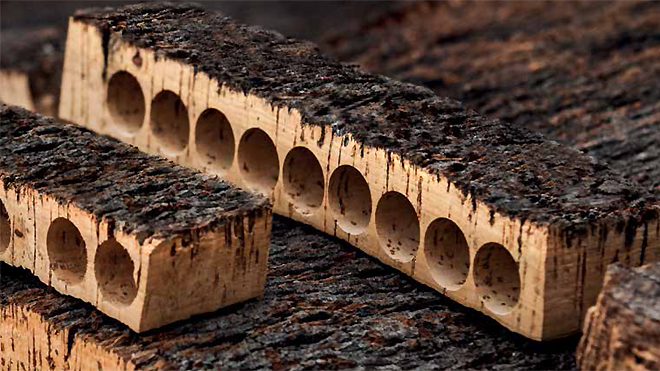
Para In addition to objects that we use daily, cork is part of the history of Portugal and can be found in many monuments and points of interest:
- in Convento de Cristo in Tomar, a World Heritage site, the window of the Sala do Capítulo (Chapter Room) is one of the places well worth visiting for its symbolism and connection to the history of the Discoveries. Among the elements carved in stone we find cork oak trunks, recalling its use in the caravels of the Portuguese navigators.
- the monks knew quite well that cork could make the environment more comfortable. Examples of this are the Convento dos Capuchos in Sintra, the Convento de Santa Cruz do Buçaco and the Convento da Serra da Arrábida, where the cells and some common areas are lined with cork.
- the 18th century nativity sets, by the sculptor Machado de Castro, with terracotta figures in cork scenarios are a reference in the history of Portuguese decorative arts. One opf them can be seen in Basílica da Estrela in Lisbon.
- in Sintra, the Chalet da Condessa d'Edla was built and decorated in line with the romantic spirit of the 19th century. On the doorframes, windows and glasses, cork is one of the most striking decorative elements.
- in the Algarve, São Brás de Alportel is a location where the cork industry was very important for its development. Currently it is the centre of a Cork Route.
- the history of cork is also present in local museums, which can be ethnographic such as the Museum José Régio in Portalegre, or linked to industrial archaeology, such as the Ecomuseum of Seixal.
- modern equipment such as Planet Cork, at the World of Wine, in Porto, trace the history of the material and its applications in our country.
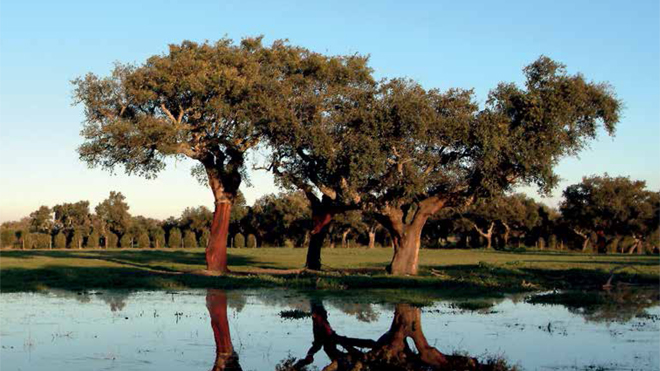
Portugal is the largest producer of cork in the world; the country is responsible for over 60% of the volume of all exports and has an area of cork oak equivalent to a quarter of that on Earth.
Such a versatile natural product, it even allows to produce things beyond imagination.
A dress for Lady Gaga
It was with Pelcor cork fabric that designer Teresa Martins worked on a complete look, created just for Lady Gaga. Inspired by the award-winning singer and actress' art and also by symbolist Gustav Klimt's view of the female body, Teresa Martins created a dress in gold and silver-plated cork, hand-embroidered with beads and metallic threads, recreating the characteristic textures and compositions of the remarkable painter's paintings. The dress, which symbolises the fusion between fashion and audiovisual arts, took two years to produce and was offered to Lady Gaga, who wore it at an ArtRave in Lisbon, right after her last concert in Portugal in November 2014 - the creation is still featured on the multifaceted artist's social networks today.
Cork portraits
After a bottle of wine is finished, cork stoppers may seem useless, but there are artists who give them a new lease of life and use them to create impressive works. Scott Gundersen is an American artist from Chicago who uses cork stoppers in his work. The first face he created was that of Jeanne in 2009, with 3,842 cork stoppers, and in 2010, it was that of a friend, Grace. This gigantic work took Scott 50 hours, using 9,217 corks. Other large-scale projects followed, some requiring around 40,000 corks. This is also Scott's way of promoting the importance of recycling and sustainable art.

Cork abroad, in Space
The Portuguese company Corticeira Amorim is one of the main partners in the supply of insulation solutions for NASA and the European Space Agency (ESA). Cork has been used for decades for this purpose; there was even cork insulation on the Apollo XI voyage, the first to set foot on the Moon. Amorim's various branches are present around the globe, with offices in the USA, Latin America, Eastern Europe and Southeast Asia. Recently, they reproduced 600 square metres of the surface of Mars with the material, a floor used in marketing actions for the whole world, starring former astronaut Scott Kelly.
Sustainable waves
In another field, the Hawaiian surfer Garrett McNamara, who has ridden the biggest waves in the world, has a board made entirely of Portuguese cork, created in the middle of the last decade. It was a joint effort in which dozens of professionals in design, research, aerodynamics and materials development, as well as McNamara himself, collaborated in the creation of the ideal board to withstand and surf the giant waves of the Nazaré canyon.
When travelling around the country, especially in the Alentejo, look at the cork oak and notice that it is one of the most common trees in the landscape. It's a Portugal - and a world - of cork, and we all live in it.


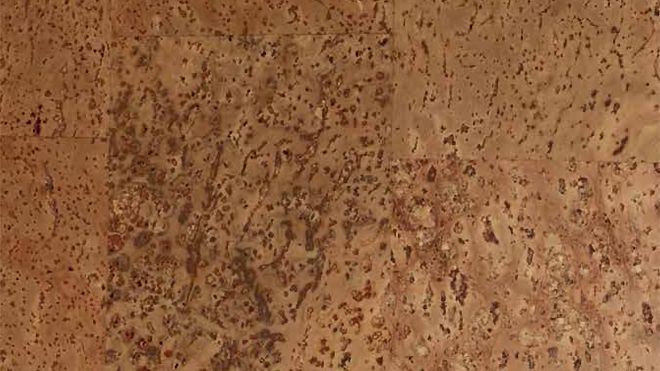





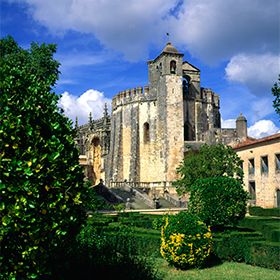
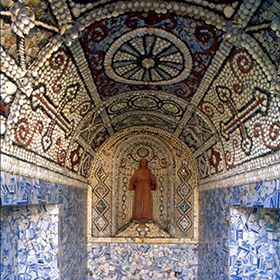

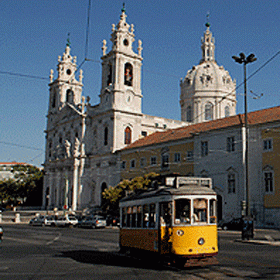
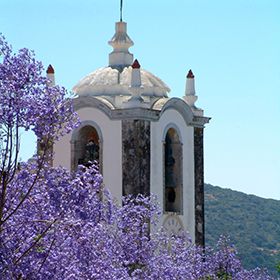
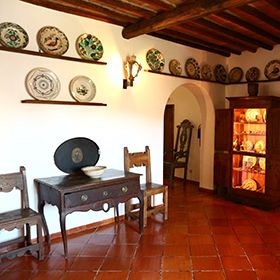



 Explore
Explore 
 Remember and Share
Remember and Share 


